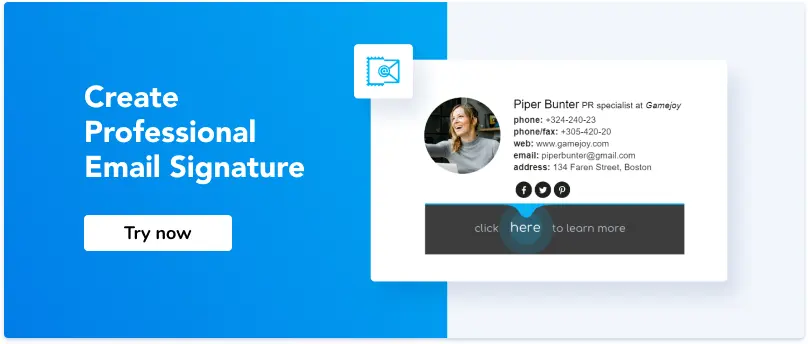Why Email Signatures for Nonprofits Are the Vital Part of the Marketing Strategy
1. The advantages of using email signatures for nonprofit organizations
2. What you miss if not using email signatures for your NPO
3. How to create and manage email signatures for all your nonprofit organization
4. How to structure a nonprofit email signature template
5. Email signature ideas and examples for nonprofit organizations
6. Beyond email signatures: Best email marketing tips for nonprofit organizations
7. Leverage marketing tools for nonprofits
Nonprofit organizations often look for affordable marketing tactics that can raise awareness, increase reach, and build trust. Email signature, which email users add at the bottom of every email message they send, is a powerful, low-cost email signature marketing tool every nonprofit should try implementing.
The advantages of using email signatures for nonprofit organizations
When we meet people at offline events, we usually exchange business cards to create a more personal and memorable impression and build relationships in the future. And what do we do when we meet potential customers online? In today's digital age, meeting potential partners online is just as important. That's why virtual business cards are essential. They're like digital versions of traditional business cards, allowing you to easily share your contact information and make a lasting impression online.
-
Email signatures increase trust in your email
Earning customer trust as a nonprofit organization (NPO) can be a challenge. Because you share the human side of your business in your email signature, it may contribute to winning customer trust and loyalty. Moreover, according to our recent research on email marketing statistics, 33.1% of people find email signatures to be a key factor in building trust with a sender.
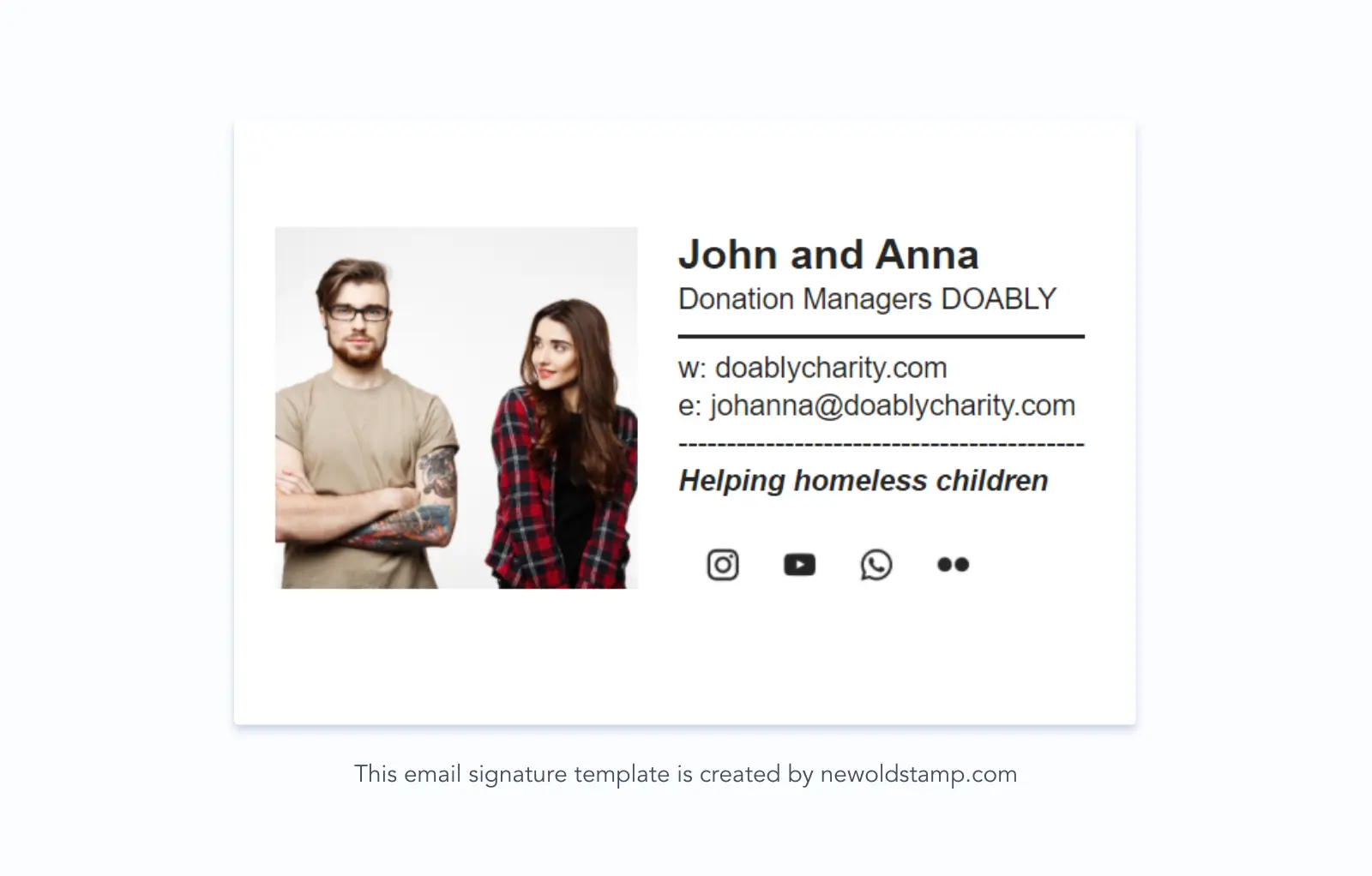
-
Signatures make your email more professional
A well-thought-of and well-designed email signature line will tell your potential supporters who you are and what you do. It makes a statement about you and your organization; it makes you look professional.
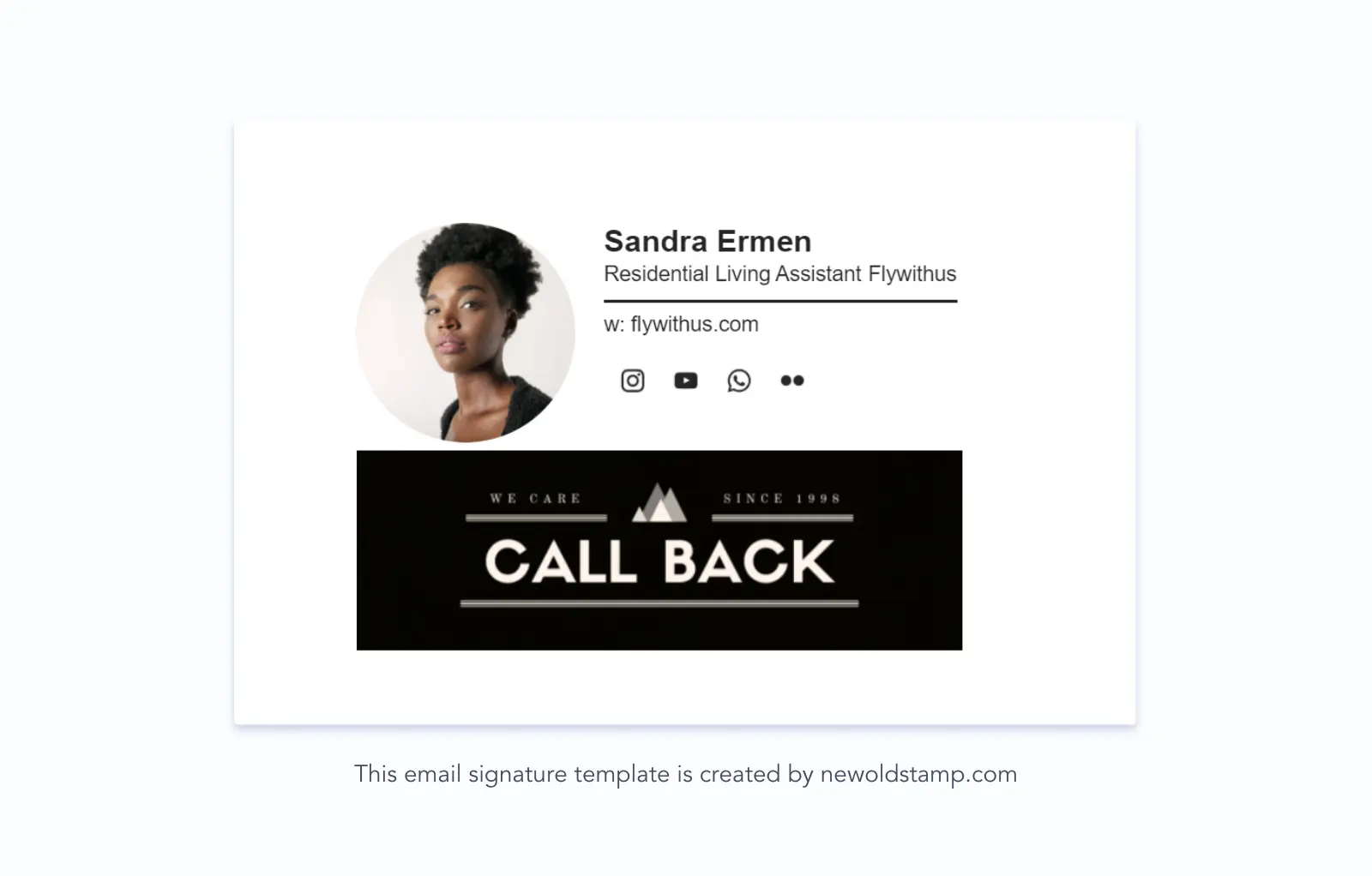
-
Email signatures help to reach you more easily via additional contacts
By providing your potential supporters with different contact information like the cell phone number, the website URL, social media links, etc. in your email footer, you give them a choice to contact you in whatever is most convenient for them.
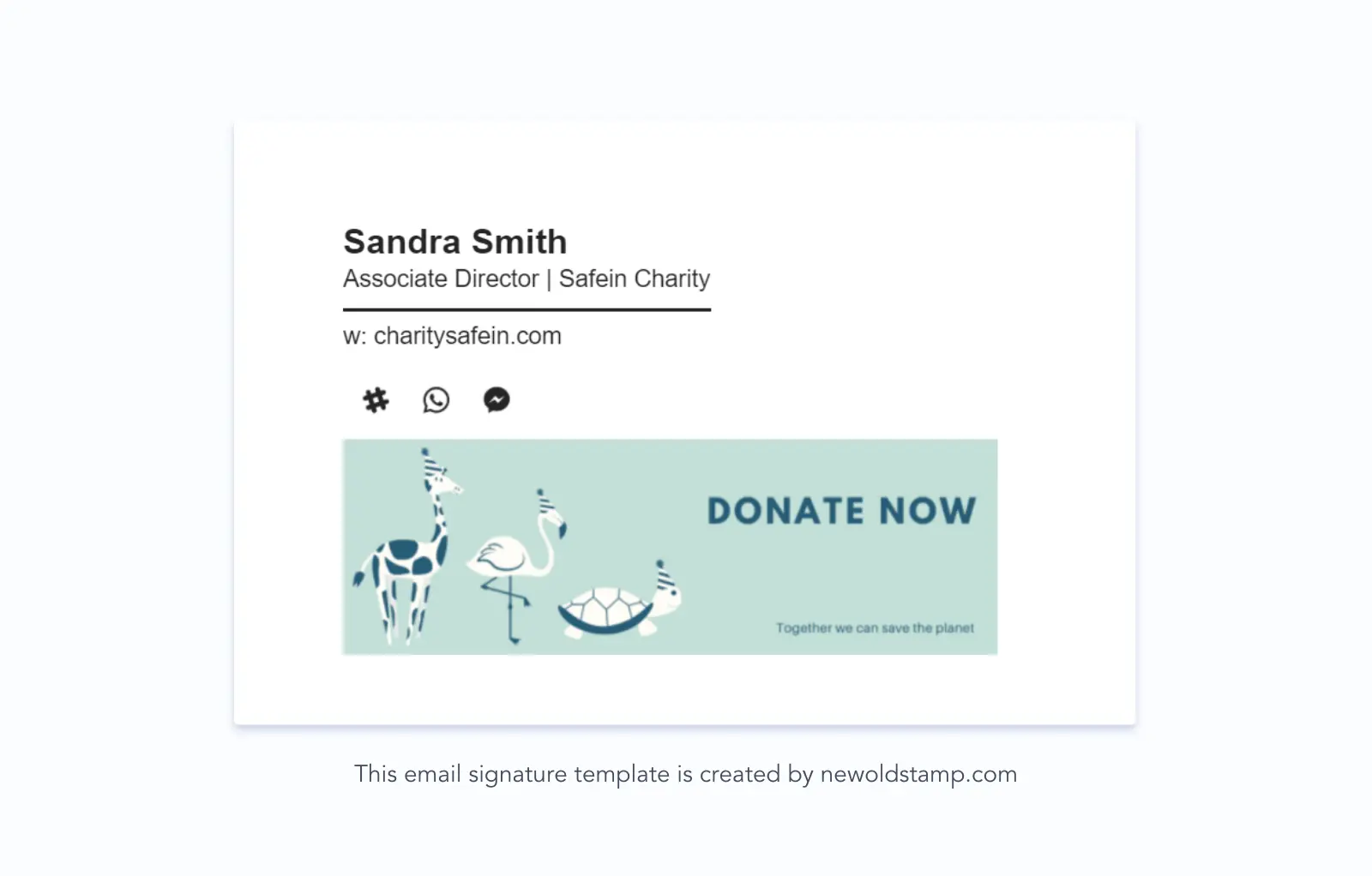
What you miss if not using email signatures for your NPO
If your email or emails of other team members simply contain the name, position, and phone number, you are missing out on an excellent opportunity to promote your organization.
Branding opportunities. Branding is more than just a great font and logo. A virtual business card is an excellent channel to spread information about your brand, promote new events, and build on branding strategies & brand value.
Marketing opportunities. Let's say your NPO has 10 employees, each of whom sends approximately 10 emails per day outside the organization. Multiply this number by 21 business days in a month. That's 2,100 virtual business cards distributed over your target audience monthly. If you have 100 employees, that's 21,000 cards monthly!
How to create and manage email signatures for all your nonprofit organization
As we mentioned, inconsistent corporate signatures can hurt an NPO's reputation as it can come across as messy and unprofessional. Because every employee should have the same design and layout, you can't let them create signatures independently.
Use email signature management software
To eliminate inconsistencies in your branding, create corporate e-signatures for your organization using email signature management software. This will allow you to create multiple signatures based on your design quickly and control all of them in one place.
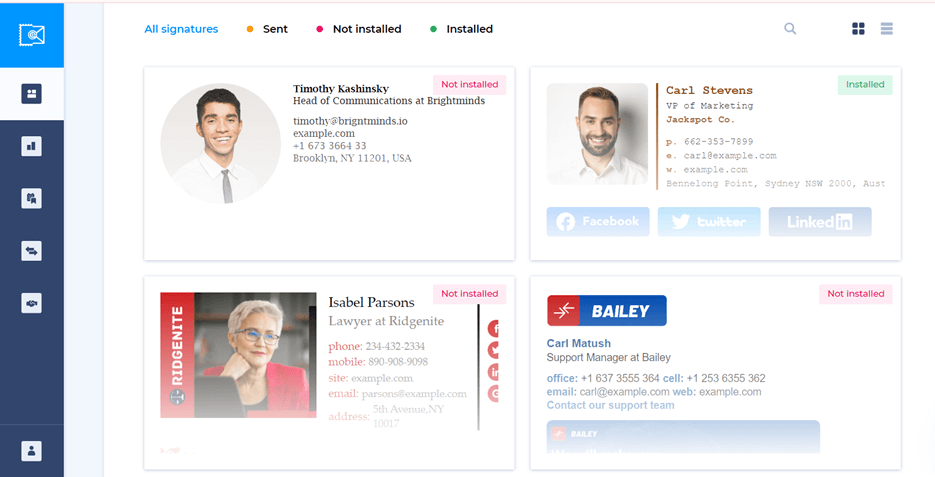
Moreover, you don't need to create each signature from scratch. Simply create one master signature and then upload a file with contact details, and the system will create signatures by itself.
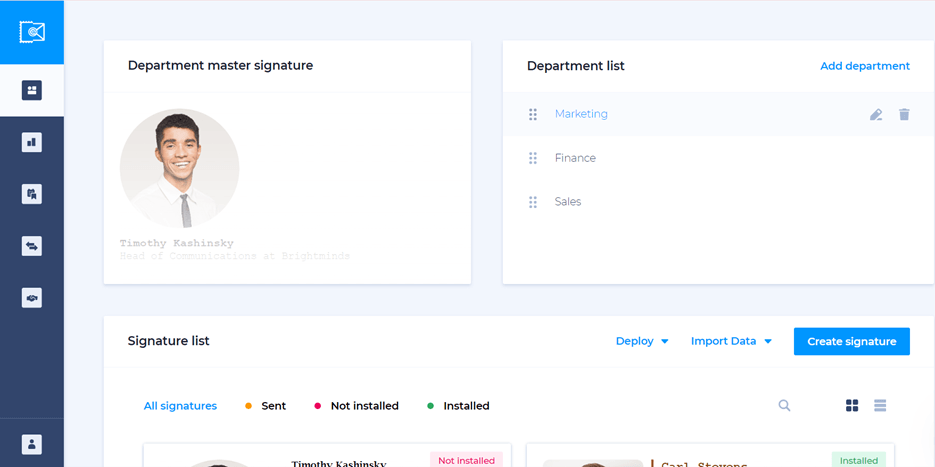
Or you can share the link with the pre-set layout with the team, and they will do everything for you. Easy as pie.
Run email signature banner campaigns
Another advantage of such software is the option to promote videos, landing pages, social media accounts, events, accomplishments, etc. in every email you and your colleagues send. Besides, if you want to change your banners from time to time, you can do this quickly without having to make changes to every single signature.
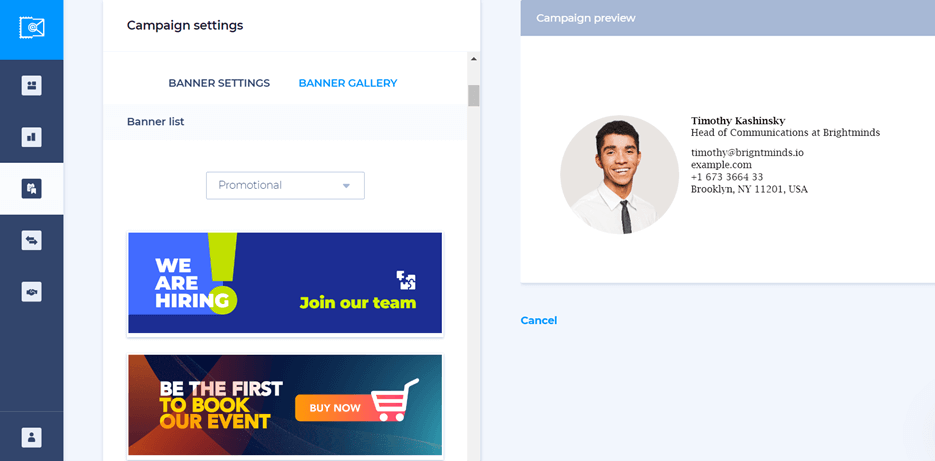
How to structure a nonprofit email signature template
Well, if you managed to read up on this spot, you probably are ready to create a new email signature for the nonprofit. Before we get started, remember that the signature is about branding, and when it comes to branding, consistency is vital.
To make your email signature look professional, include the following elements in your sig.

- Full name. Begin with your/employee’s first and last name. This way you will allow recipients to remember not only your organization but also people behind it. Ideally, the name in your email signature should match the name on your site and LinkedIn profile.
- Your position. This element is important because when a potential donor is seeking a specific service or a person to get in touch with, they can easily gravitate towards you.
- The Organization's name should come next.
- Logo of your NPO or your headshot to contribute to brand recognition.
- Nonprofit websites. If your nonprofit has a website or a blog, add these. If you own a few sites of importance, you may rotate them monthly.
- Contact details. Add a telephone number, fax number, cell phone number, and an alternative email of the business or organization you work for.
- Social icons linked to the official pages of your organization. To increase engagement and information sharing, include links to the organization’s social media networks.
- Email signature disclaimer. If your emails contain sensitive information, it's a good practice to add a disclaimer and/or confidentiality statement.
- Email signature banner. Don't miss the opportunity to promote your relevant news with the help of your email signature. Let people know about an upcoming charity event, your recent accomplishment, and much more.
Email signature ideas and examples for nonprofit organizations
What do the best email footers look like? Email signature creators like Newoldstamp help you design an impressive one for free.
Here are some examples of how nonprofit companies can use sig lines for campaigns. To make your email signature campaign truly successful follow the email signature marketing guide.
1. Use email signatures for fundraising
Finding new and re-engaging lapsed supporters is crucial for NPOs. Embed fundraising drives into email signatures of the entire team and let more people see that you need their help.
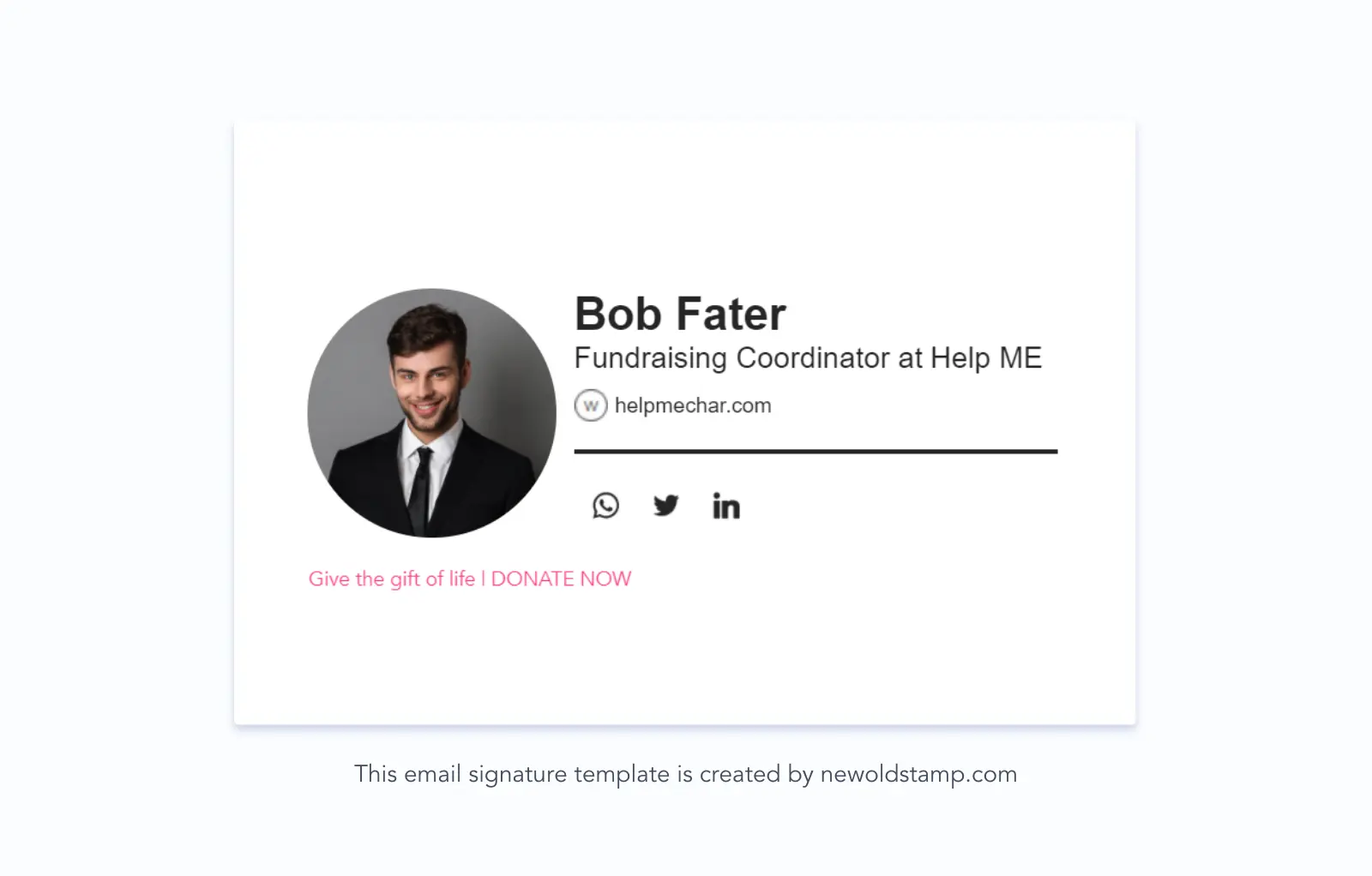
Key steps to get started:
- Identify your ideal donor. Understanding your target audience's demographics, social media habits, and motivations allows you to craft messaging that resonates with them.
- Set SMART goals. Define Specific, Measurable, Achievable, Relevant, and Time-bound goals for your fundraising campaigns.
- Craft a compelling story. Focus on the impact your NPO makes and how it positively affects the lives of others. Use emotional storytelling to connect with potential donors on a personal level.
Want to dive deeper into the world of digital fundraising strategies for your NPO? Check out the full guide "How to Create an Awesome Digital Fundraising Strategy for Nonprofit Organizations" in PDF format for a comprehensive breakdown of each step, including real-world examples and best practices.
2. Use email signatures to find nonprofit volunteer
Include links to your recruiting campaigns to increase the reach of your recruiting efforts.
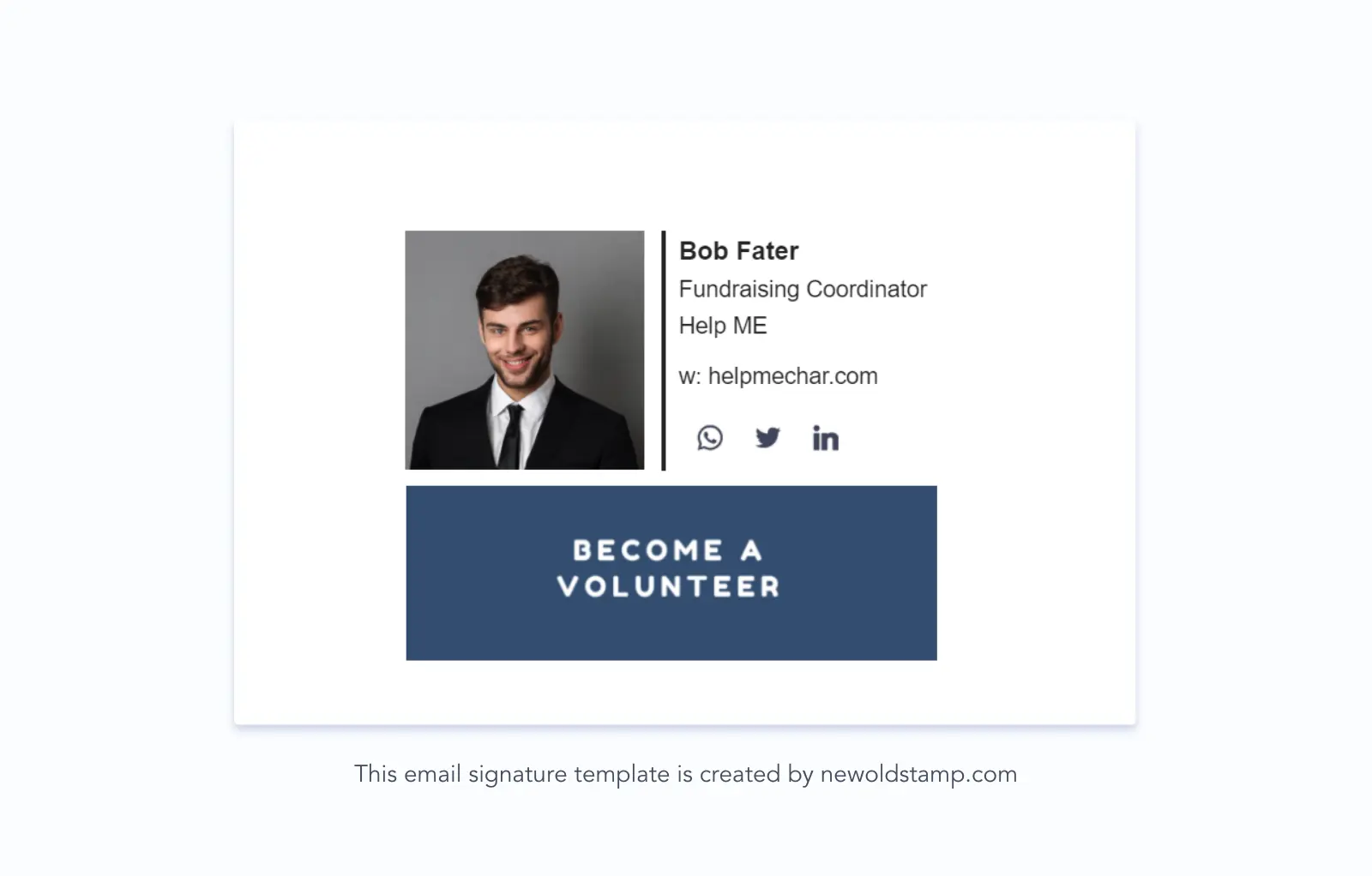
3. Use email signatures to promote charity events
Organizing or visiting a charity event? Spread the word about it and gain some awareness among your core audience.
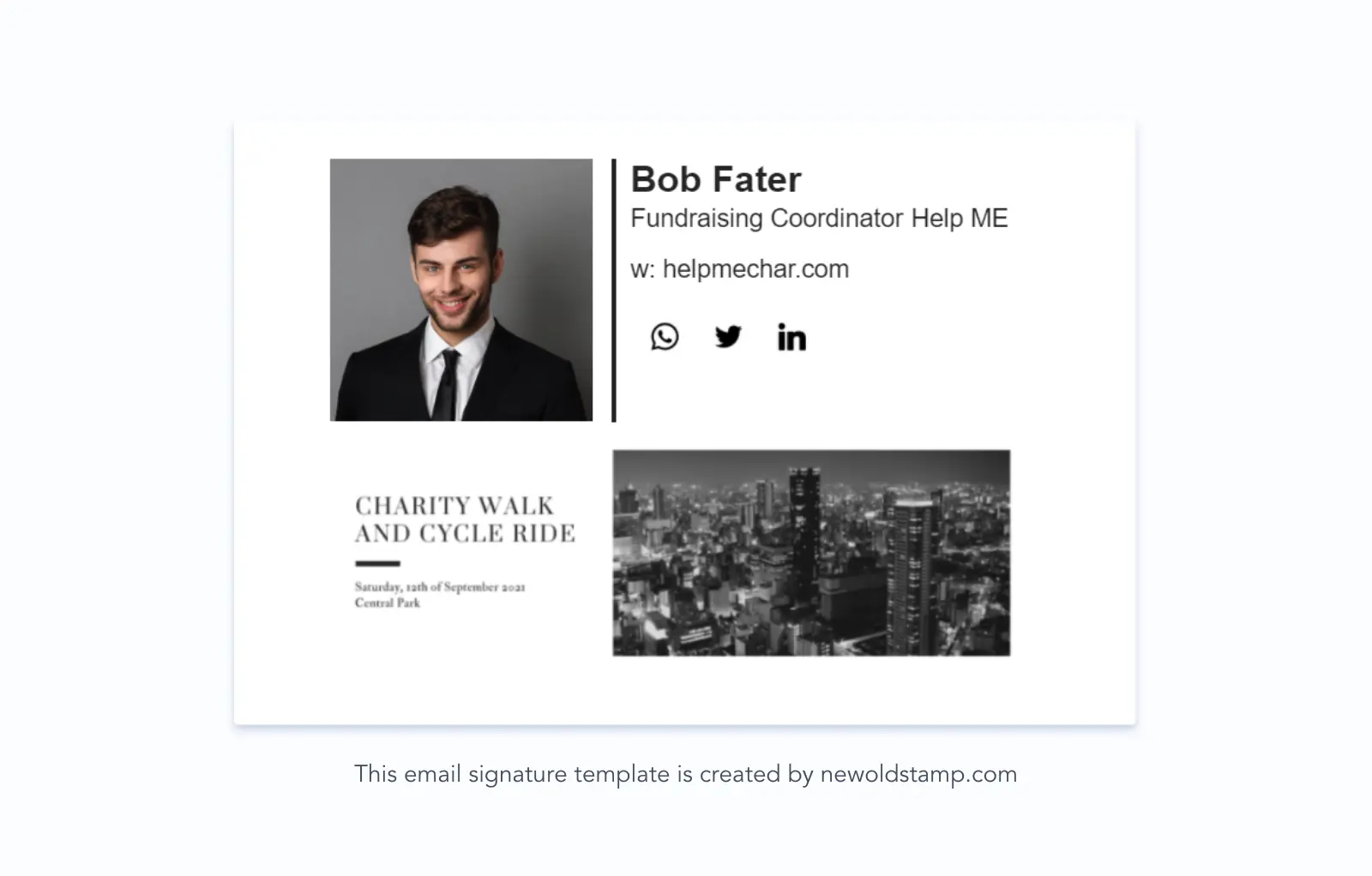
4. Use an email signature to share your best stories
Demonstrate the results of your work to motivate people to support your organization.
Beyond email signatures: Best email marketing tips for nonprofit organizations
Building strong relationships with your donor base is crucial for the success of any non-profit organization (NPO). Email marketing provides a cost-effective and impactful way to connect with your supporters, share your mission, and inspire action.
Why should nonprofits invest in email marketing?
- Inexpensive marketing channel
Email marketing is one of the most cost-effective marketing tactics. This factor is especially important for nonprofit organizations that must take into account their budget.
- Helps with fundraising
Email marketing campaigns can increase the number of donations and boost your revenue. Newsletters, announcements, surveys, donation requests, etc., sent by email will allow you to reach a lot of people, give them information on your cause, and provide them with the most convenient ways to help you.
- Easy to use
The tools of most email service providers are so simple and intuitive that almost anyone in a company can create professional, beautifully designed emails without knowing HTML.
- Fast delivery of important information
With email, you can notify your subscribers immediately when something new comes up. According to the email study of Alchemy Worx, 76% of opens of electronic messages occur in the first two days after an email was sent. It is fast enough, isn’t it?
Check out the full PDF guide "Best Email Marketing Tips For Nonprofit Organizations" for in-depth strategies and inspiring examples. Learn how to create effective welcome emails, craft compelling donation requests, design impactful newsletters, and more.
Pro Tip: Segmentation is Key!
For even greater impact, segment your email lists. This allows you to target specific audiences with relevant CTAs within your email signature. Learn more about list segmentation in our guide: "Key Types of List Segmentation Nonprofits Can Use for Basic Email Campaigns.”
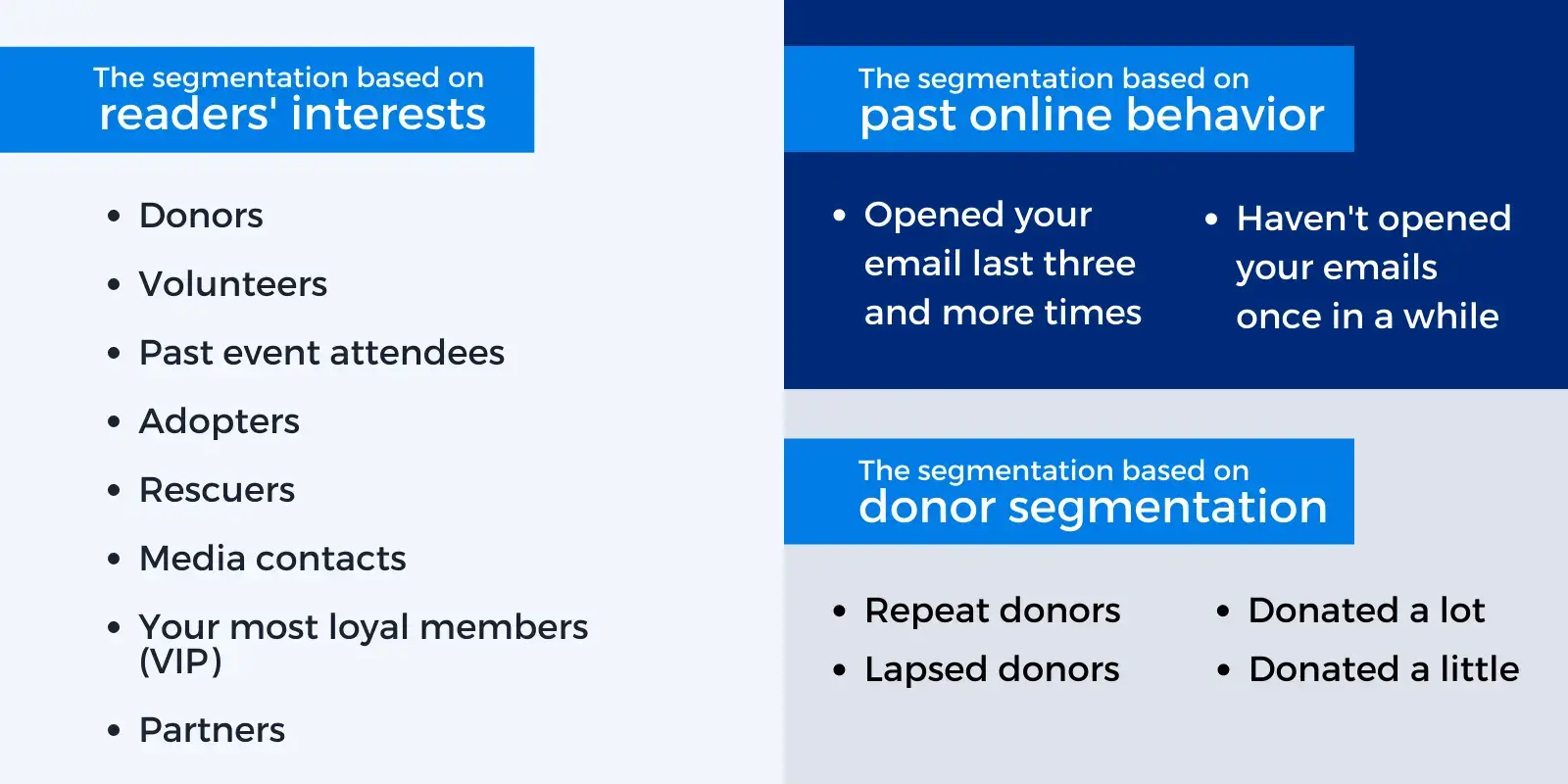
Leverage marketing tools for nonprofits
If you believe your nonprofit organization can thrive without leveraging marketing tools, think again! Modern marketing technology can boost your donor base, enhance awareness, streamline fundraising efforts, and improve communication with the public—all while keeping costs minimal or even non-existent.
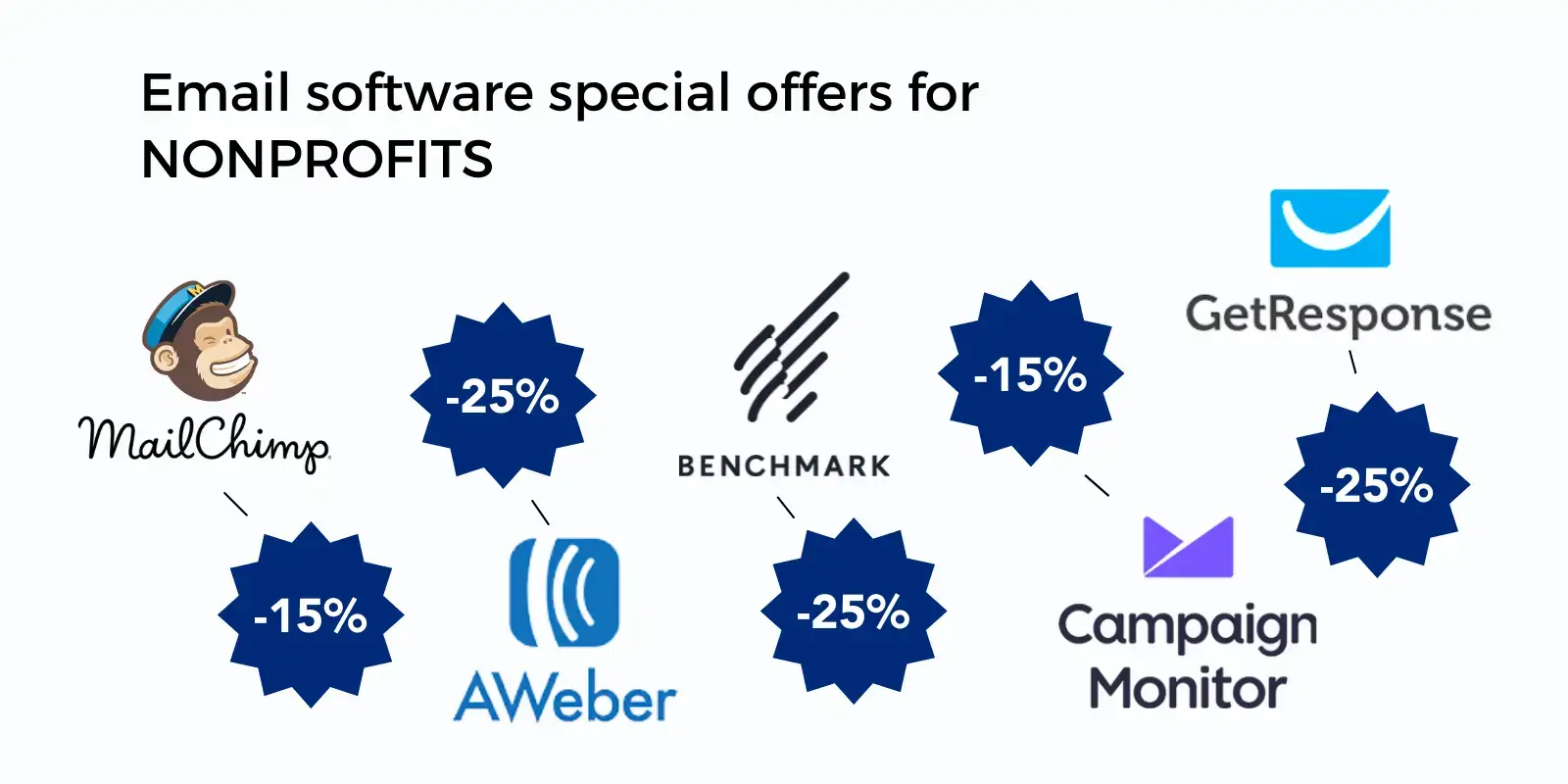
Tools to create online forums and communities
Building an online community is a powerful way for nonprofits to engage with their audience and gather insights. Platforms like CreateAForum, Tapatalk, and ProBoards enable you to connect with a wider audience and foster long-lasting relationships with your supporters.
Tools to manage and schedule events
Organizing events is an excellent way to attract new members, but it can be overwhelming. Simplify event planning with tools like Eventbrite for Nonprofits, Bizzabo, etc. These platforms streamline registration, payment processing, and communication.
Tools to manage email marketing
Effective communication is the cornerstone of nonprofit success. Stay connected with your supporters and send targeted email campaigns with tools like ActiveCampaign, AWeber, Mailchimp, etc. These platforms allow for automation, segmentation, and insightful analytics.
Tools to create presentations, video, and other multimedia
Visual engagement is crucial for nonprofits. Tools like Canva for Nonprofits, Design Wizard, Animoto, and Prezi empower you to create professional-looking presentations, videos, and other multimedia content to capture attention and spread your message.
Tools to work with social media platforms
Promoting your nonprofit on social media is essential for visibility. Buffer, BuzzSumo, Hootsuite, and Sendible simplify social media scheduling, content discovery, and performance analysis, enabling you to leverage social media effectively.
Tools to build websites, blogs, and manage content
Every nonprofit needs a compelling online presence. Tools like Elevation and Pixpa allow you to create a user-friendly and mobile-friendly website for your nonprofit, even without coding knowledge.
To delve deeper and discover the best tools for your specific needs, download our comprehensive guide: "Amazingly Cheap (or Free) Marketing Tools for Nonprofits You Can Start Using Now".
Conclusion
If you work or volunteer for a nonprofit business or organization and would like to look more professional when emailing your current and prospective supporters, you need a well-thought-of email signature to look the part.
The e-signature is like a digital business card that you include at the bottom of your messages to let your recipients know who you are, what you do, and how they can get in touch with you.
Also, the email footer may contain your photo, social media icons, website URL, and a banner to promote your events, news, etc. Modern email signature generators will let you create, customize, and manage email signatures for all members of your organization.


